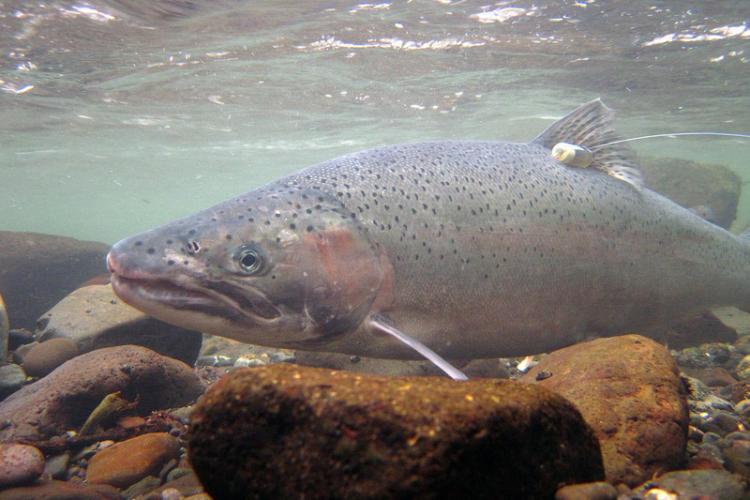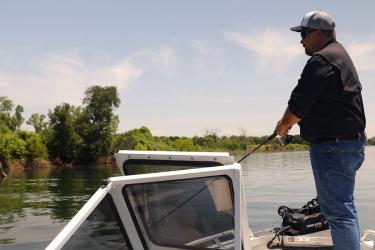Salmon and steelhead start their lives in freshwater streams and tributaries. They then migrate downstream, rearing and maturing, before they reach the ocean. They live in the ocean for two to five years, migrating thousands of miles, before beginning the journey upstream to their natal streams where they spawn to produce the next generation of fish. This remarkable life cycle is what makes salmon and steelhead truly unique.
NOAA Fisheries West Coast Region protects and conserves endangered and threatened salmon and steelhead species on the West Coast, as well as manages sustainable fisheries for salmon and steelhead.
Endangered and Threatened Salmon and Steelhead
NOAA Fisheries has listed 28 species of salmon and steelhead on the West Coast as threatened or endangered under the Endangered Species Act (ESA). We work to protect, conserve, and recover these ESA-listed salmon and steelhead species.
Species Status, Recovery Actions, and Regulatory Actions
- Pacific Salmon and Steelhead on the West Coast
- Salmon Status Reviews and Five-Year Updates
- Steelhead Status Reviews and Five-Year Updates
- Salmon Recovery Plans
- Steelhead Recovery Plans
Salmon and Steelhead Federal Register Rules and Notices
Maps, GIS Data, and Publications
Additional Resources
- Learn about what you can do to help salmon recover
- Species Reintroductions on the West Coast
- Endangered Species Conservation
Salmon and Steelhead Fisheries
Pacific salmon and steelhead fisheries provide for commercial, recreational, and tribal harvest in ocean and inland waters. The broad geographic range and migration route of salmon and steelhead, from the inland tributaries of Idaho to offshore areas of Alaska and Canada, requires comprehensive management by several entities. NOAA Fisheries works in cooperation with federal, state, tribal, and Canadian officials to manage these fisheries through several forums.



